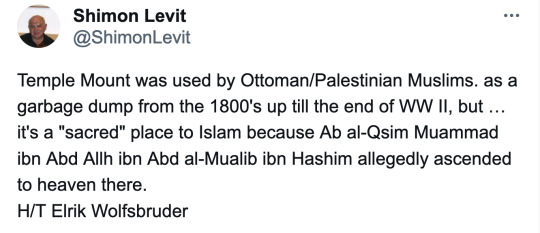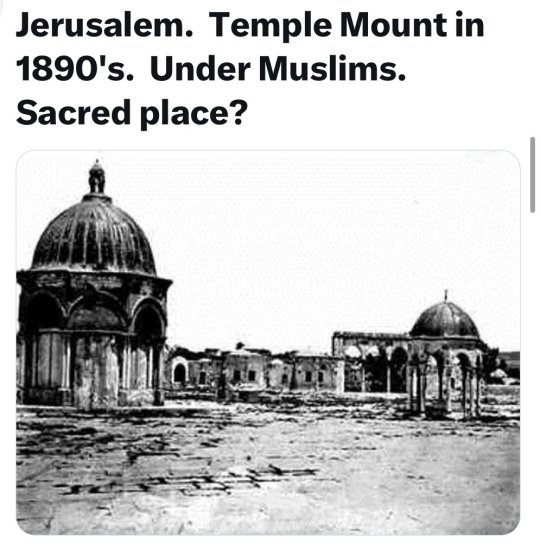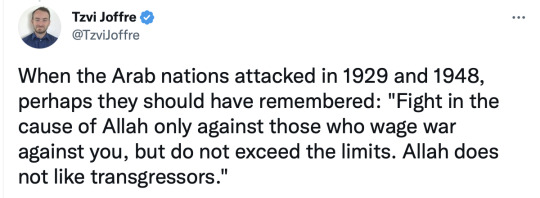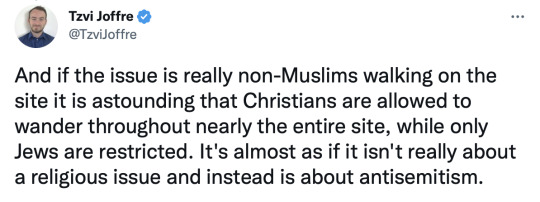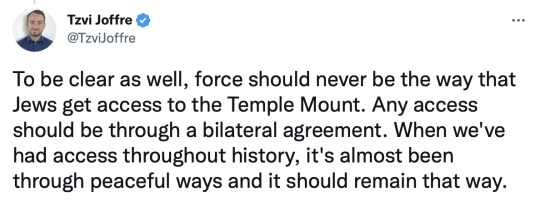#Temple Mount
Text

334 notes
·
View notes
Text

#knights templar#templar#templars#crusader#crusaders#knight#knights#crusade#crusades#art#armour#medieval#middle ages#history#europe#european#christianity#christian#christendom#middle east#jerusalem#temple mount
90 notes
·
View notes
Text
A week ago, a woman visited Islam's holiest spot, the Kabaa in Mecca, and unfurled a Palestinian flag while smiling for a camera.
Saudi security quickly came to tell her to put the flag away, which she did.
youtube
That was the entire incident. But video of it caused an uproar on social media,where people claimed she was "arrested" (she wasn't.) and that she had every right to display the flag.
Haaretz reports that Saudi officials have responded:
Speaking with Al-Ekhbariya TV, Sheikh Abdul Rahman Al-Sudais stressed that the holy site is a place of worship where only religious slogans and chants should be heard.
Al-Sudais, one of the nine imams of the Grand Mosque, said that visitors come to the site to pray and worship, not to express political views. He urged worshippers not to let their emotions distract them from their prayers, suggesting that they pray to God (Allah) for salvation over their concerns rather than expressing demands at the holy site.
This is a policy. Whether one agrees or not, the Saudis have a policy for their holy sites and are trying to enforce it.
Compare this to what regularly happens on the Temple Mount with the full permission of the Waqf:

But they do prohibit the Israeli flag from being shown.
Meaning the only consistent policy shown by the Waqf is antisemitism.
I'm still waiting to hear from any human rights group that Jews should have equal rights to worship on their holiest site.
28 notes
·
View notes
Text

On the right, a Jewish Israeli policewoman. On the left, Ahed Tamimi, a Palestinian activist who's advocated for the slaughter of Jews.
Next time someone tells you Jews are European you're welcome to show them this photo and remind them over half the Jews in Israel are Middle Eastern or North African.
#israel#islam#temple mount#al aqsa mosque#jewish#muslim#colonization#freegazafromhamas#hamasisisis#palestine#leftism#politics#israel palestine conflict#israel hamas conflict#middle east#usa#america#jerusalem#west bank#gaza#genocide#apartheid#ethnic cleansing#holocaust#ww2#hotels#beaches#Hamas#misinformation#disinformation
20 notes
·
View notes
Photo

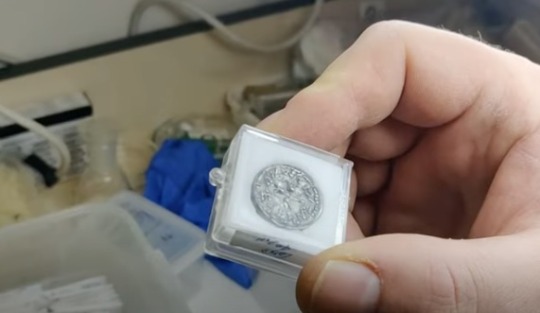

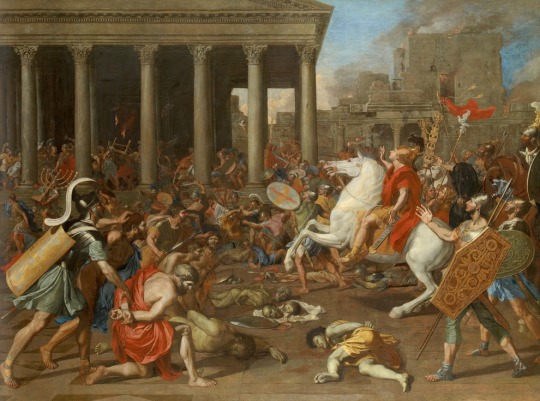
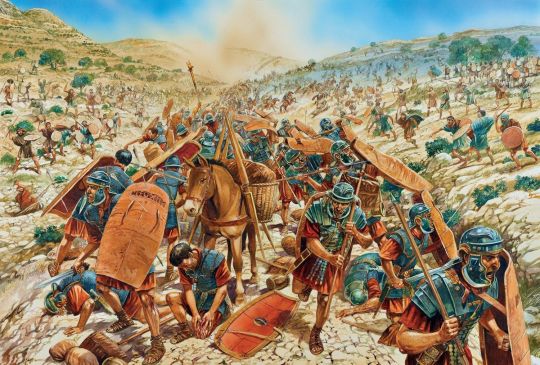
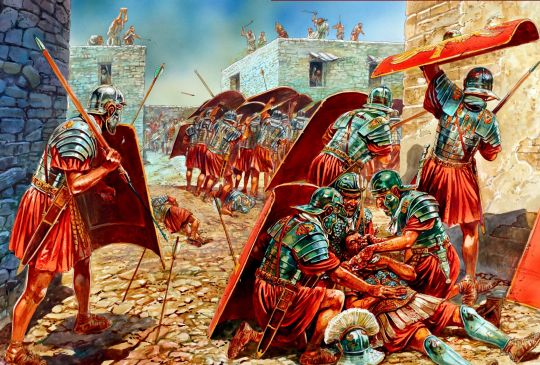

Very Rare Half-Shekel Coin From Year Three of the Great Revolt Discovered
Recent excavations by archaeologists from the Hebrew University in the Ophel area south of the Temple Mount uncovered the remains of a monumental public building from the Second Temple period that was destroyed in 70 CE.
Numerous Jewish coins, the majority of which were bronze, from the Great Revolt (66-70 CE) were discovered in the destruction layer. This collection also contained a particularly uncommon and rare discovery: a silver coin with a half-shekel denomination that dates to around 69/70 CE.
The Great Revolt was the first of several uprisings against the Roman Empire by the Jewish population of Judea.
The revolt was in response to the Romans’ increasing religious tensions and high taxation, which resulted in the looting of the Second Temple and the arrest of senior Jewish political and religious figures. A large-scale rebellion overran the Roman garrison in Judea, forcing the pro-Roman King Herod Agrippa II to abandon Jerusalem.
A coin discovered in the ruins of a Second Temple-era building was most likely used to pay an annual tax for worship at the site; most coins of this type are bronze.
The dig was carried out by a team from the Hebrew University, led by Prof. Uzi Leibner of the Institute of Archaeology, in partnership with the Herbert W. Armstrong College in Edmond, Oklahoma, and with the support of the East Jerusalem Development Company, the Israel Antiquities Authority, and the Israel Nature and Parks Authority. The rare coin was cleaned at the conservation laboratory of the Institute of Archaeology and identified by Dr. Yoav Farhi, the team’s numismatic expert and curator of the Kadman Numismatic Pavilion at the Eretz Israel Museum in Tel Aviv.
“This is the third coin of this type found in excavations in Jerusalem, and one of the few ever found in archeological excavations,” said the researchers.
During the Great Revolt against Rome, the Jews in Jerusalem minted bronze and silver coins. Most of the silver coins featured a goblet on one side, with ancient Hebrew script above it noting the year of the Revolt. Depending on its denomination, the coins also included an inscription around the border noting either, “Israel Shekel,” “Half-Shekel,” or “Quarter-Shekel.” The other side of these coins showcased a branch with three pomegranates, surrounded by an inscription in ancient Hebrew script, “Holy Jerusalem.”
Throughout the Roman era the authority to produce silver coins was reserved solely for the emperor. During the Revolt, the minting of coins, especially those made of silver, was a political statement and an expression of national liberation from Roman rule by the Jewish rebels. Indeed, throughout the Roman period leading up to the Great Revolt, no silver coins were minted by Jews, not even during the rule of King Herod the Great.
According to the researchers, half-shekel coins (which had an average weight of 7 grams) were also used to pay the “half-shekel” tax to the Temple, contributed annually by every Jewish adult male to help cover the costs of worship.
Dr. Farhi explained, “Until the revolt, it was customary to pay the half-shekel tax using good-quality silver coins minted in Tyre in Lebanon, known as ‘Tyrean shekels’ or ‘Tyrean half-shekels.’ These coins held the image of Herakles-Melqart, the principal deity of Tyre, and on the reverse they featured an eagle surrounded by a Greek inscription, ‘Tyre the holy and city of refuge.’ Thus, the silver coins produced by the rebels were intended to also serve as a replacement for the Tyrean coins, by using more appropriate inscriptions and replacing images (forbidden by the Second Commandment) with symbols. The silver coins from the Great Revolt were the first and the last in ancient times to bear the title ‘shekel.’ The next time this name was used was in 1980, on Israeli Shekel coins produced by the Bank of Israel.”
The precious silver coins are thought to have been minted inside the Temple complex, according to a Monday statement from the Armstrong Institute.
#Very Rare Half-Shekel Coin From Year Three of the Great Revolt Discovered#temple mount#Great Revolt against Rome#coins#silver coins#collectable coins#ancient coins#ancient artifacts#archeology#archeolgst#history#history news#ancient history#ancient culture#ancient civilizations#roman history#roman empire#ancient israel
169 notes
·
View notes
Text

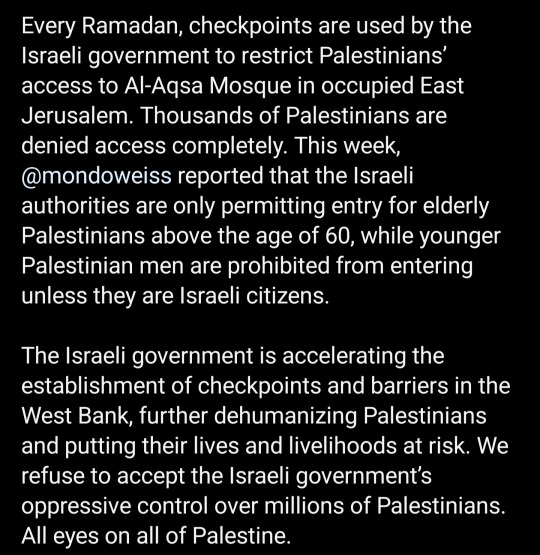
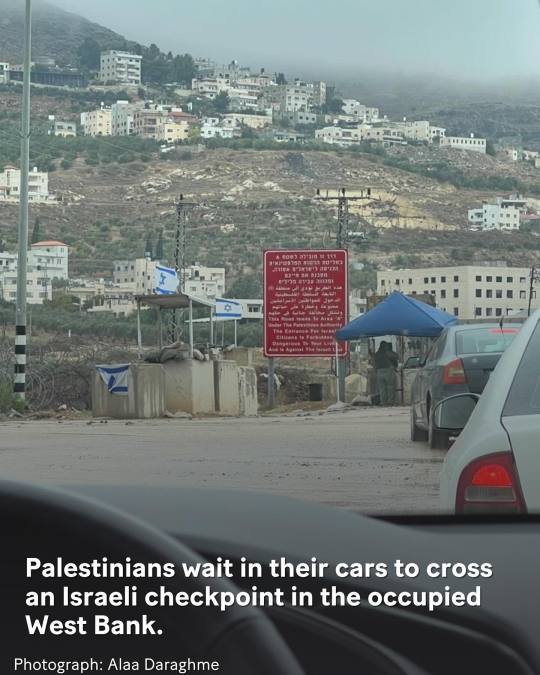



Literally undermining Al Aqsa & now blocking Muslims from accessing the mosque during Ramadan, refusing Christians and Catholics access to church for Palm Sunday (and likely Easter as well) and no one makes a peep. The smallest of the 3 religions that hold Jerusalem sacred are in control by military force and no one sees a problem? I feel like I'm in the Twilight Zone sometimes.
#ramadan#checkpoints#palm sunday#easter#jerusalem#al aqsa mosque#undermining#cultural and religious destruction#apartheid#save palestine#ethnic cleansing#israel is an apartheid state#seek truth#free palestine 🇵🇸#genocide#illegal occupation#israel is committing genocide#israeli war crimes#stolen land#stolen heritage#sacred site#Jerusalem#temple mount#west bank#jewish voices for peace#spread awareness#share#save al aqsa#israel is a terrorist state#intentional destruction of religious sites makes Israel no better than Isis
7 notes
·
View notes
Text
Temple Mount in Jerusalem might just be the world’s most contested religious site. Every year more and more Jews visit this Muslim controlled site, fueling fears of reprisals.
14 notes
·
View notes
Text
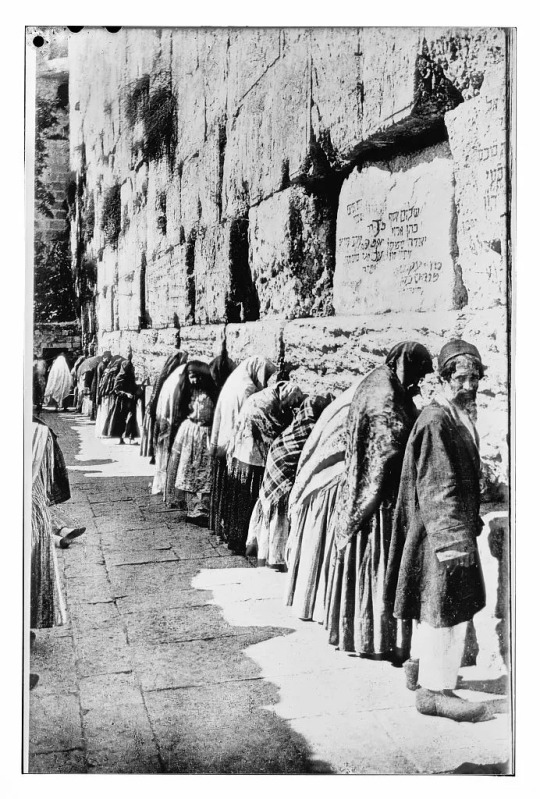
Jews at the Wailing Wall during the Ottoman Period, photo taken sometime between 1900-1920.
#jewish#jewish history#mizrahi jews#palestine#palestinian history#west asia#wailing wall#western wall#jerusalem#temple mount#20th century
14 notes
·
View notes
Text
A Few Things For Us All To Think About ( #1528 )
A Few Things For Us All To Think About ( #1528 )
1.) There is only one place where a human can have true rest and that is in the arms of our Lord!
2.) No war is ever truly finished until you have cut off the head of the snake!
3.) It is never okay to starve the children in a war because of the sins of their parents!
4.) The Jewish Nation will never fall until Satan is sitting on His throne on…
View On WordPress
2 notes
·
View notes
Text
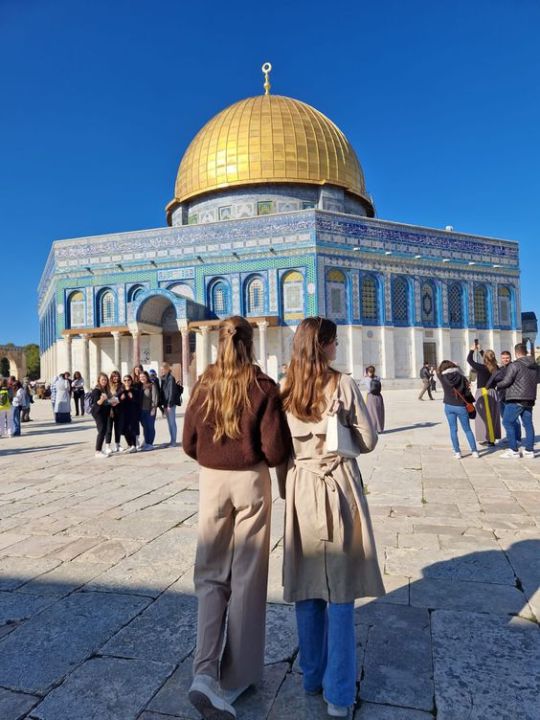
3 notes
·
View notes
Text
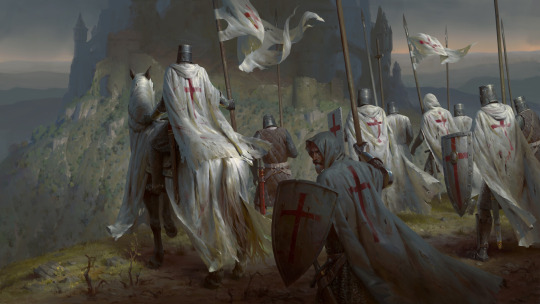
Templars by Anton Solovianchyk
#knights templar#templars#art#knights#history#medieval#middle ages#europe#european#christianity#christian#anton solovianchyk#armour#religion#knight#jerusalem#temple mount#castle#fortress#castles#landscape#temple#temples#military
188 notes
·
View notes
Photo
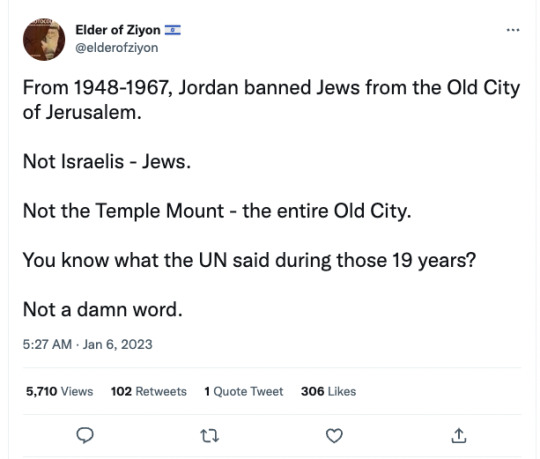

Source
135 notes
·
View notes
Text

Isreal 🇮🇱
28/28
#aesthetic#countries#israel#middle east#Asia#christianism#holy land#judaisim#islamic#yad vashem#masada national park#western wall#dome of the rock#jerusalem#telavive#dead sea#temple mount#nazaré#old city
14 notes
·
View notes
Text
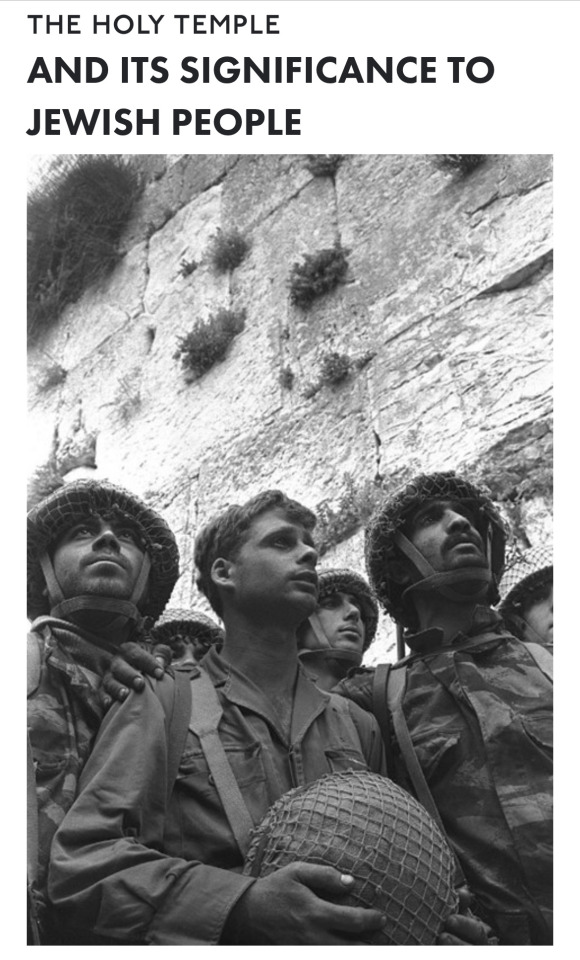
Posted by Dorit Revitch on July 07, 2022
The “Holy Temple”- in Hebrew, Beit Hamikdash was a large (approximately football-stadium-sized), multi-level, indoor-outdoor structure that was and spiritually still is the nucleus of Judaism. Its most sacred site. It stood atop Jerusalem’s Mount Moriah.
The First Temple called Solomon's Temple was built in 957 BCE and was destroyed by the Babylonians in 587 or 586 BCE.
The second Temple was completed in 515 BCE and was destroyed by the Romans during the Siege of Jerusalem in the year 70 CE.
Many projects to build a Third Temple have not yet come to fruition, but the Temple still features prominently in Orthodox and Conservative Jewish services alike.
Today, to our sorrow, the Temple Mount is the site of the Dome of the Rock and the Al-Aqsa Mosque.
But with all that, we the Jewish people are yearning and praying and remembering the Holy Temple or Beit Hamikdash, or Beit-Habchira. Why? Why do we dwell on something that existed over 2000 years ago?
The Holy Temple of Jerusalem or as we will call it here The Holy Temple was, is, and will always be the center of Jewish life all over the world.
But let us first look at some Historical interesting events, no I will not bore you with the whole history I promise.
We all know what the holiday of Hanukkah is, or so we think, we know it as this holiday you get gifts every day for 8 days, and Hanukkah Gelt, and the dreidel.
But what is really the story of Hanukkah? It is the story of the Holy Temple.
According to Jewish sources, another demolition of the Temple (apart from the two mentioned above) was somehow avoided in 332 BCE when the Jews refused to acknowledge the self-deification of Alexander the Great of Macedonia, but Alexander was somehow convinced at the last minute by smart diplomacy and flattery. After the death of Alexander on 323 BCE, and the dismembering of his empire, the Ptolemies came to rule over Judea and the Temple. Under the Ptolemies, the Jews were given many civil liberties and lived content under their rule. However, when the Ptolemaic army was defeated by Antiochus in 200 BCE, this friendly policy changed. Antiochus wanted to convert the Jews to Hellenism and attempted to make the Holy Temple into the Greek Pantheon. Moreover, a rebellion started and was brutally crushed, but no further action by Antiochus was taken, and when Antiochus died in 187 BCE, his son was his successor Sleucus IV Philopator .
However, his policies never took effect in Judea, since he was assassinated the year after his crowning, it was Antiivhus IV Epiphanes that succeeded his older brother to the throne and immediately adopted his father's previous policy of universal Hellenisation. The Jews rebelled again and Antiochus, in a rage, retaliated in force. Considering the previous episodes of discontent, the Jews became even more upset when the religious observances of Shabbath and Circumcision were officially outlawed. When Antiochus erected a statue of Zeus in the Temple and Hellenic priests began sacrificing pigs (the usual sacrifice offered to Greek Gods of the Hellenic religion), the anger of the Jewish people began to spiral. When a Greek official ordered a Jewish priest to perform a Hellenic sacrifice, the priest – Mattathias (Mathityahu in Hebrew) killed him. In 167 BCE, the Jews followed and went behind Mattathias and his five sons to fight, they won their freedom from the Seleucid authority. Mattathias' son Judah the Macabee re-dedicated the temple in 165 BCE and the Jews celebrate this event to this day as the central theme of the non-biblical festival of Hanukkah. The temple was rededicated under Judah Maccabee in 164 BCE.
Around 20 BCE, the building was renovated and expanded by Herod the Great and became known as Herod’s Temple. It was destroyed 90 years later by the Romans in 70 CE.
During the Bar Kokhba Revolt against the Romans in 132–135 CE, Simon Bar- Kokhba and Rabi Akiva wanted to rebuild the Temple, but bar Kokhba's revolt failed, and the Jews were banned from Jerusalem, by the Roman Empire, except on Tisha B’Av. Julian the Emperor allowed the Temple to be rebuilt, but the Earthquake of Galilee in 363 ended all attempts ever since.
After the Muslim conquest of Jerusalem in the 7th century, Umayyad Caliph Abd al-Malik ibn Marwan ordered the construction of an Islamic shrine, the Dome of the Rock, on the Temple Mount. The shrine has stood on the mount since 691 CE; the al-Aqsa Mosque, from roughly the same period, also stands in what used to be the Temple courtyard.
Jordan occupied East Jerusalem and the Temple Mount immediately following Israel's declaration of independence on May 14, 1948. In 1967 during the Six-Day War, Temple Mount, along with the entire Old City of Jerusalem, was captured from Jordan by Israel, allowing Jews once again to visit the holy site.
The iconic image of Israeli soldiers shortly after
the capture of the Wall during the Six-Day War
Today the Jewish Holy Site is the remains of the walls of the Holly temple which is the Wailing Wall / the Western Wall, / Hakotel in Hebrew.
Even though the Muslims claim that the Temple mount was always theirs and they were first, and the stone in the center of the Omar Shrine is where Abraham was going to Sacrifice Izaak, the Jewish people will always claim, as we should, to have the first right on the Moriah Mountain or as we call it now temple mount, there are more than enough archaeological evidence backing up this fact.
The Temple’s centrality to Jewish existence is reflected in the fact that many of the Jewish mitzvot are Temple-related: daily and weekly offerings; holiday pilgrimages and offerings; personal, voluntary, and obligatory offerings; qualifying criteria for the Kohanim and Levites; Temple rituals; and the dos and don’ts for all the above. There are around 180 mitzvot (good deeds) out of a total of 613 related to the Holy Temple.
When the Temple stood, G_D was real to everyone. The Holy Temple was a place of spirituality, a place where you can feel and sense G_D’s presence. A place that when you wanted to be close to G_D you went to Jerusalem to find Him at His Temple. The Temple was a symbol of G_D and all the things that “G_D” means responsibility, morality, ethics, love, compassion, and humility. It was a place where one found spirituality:
You didn’t have to be Jewish to go to the Temple; kings and peasants from every country and culture traveled long distances just to experience it all. The Temple was the single most important structure in society, offering structure to society. Then it was destroyed.
Since the destruction of the Temple, G_D was removed from its geographic location and placed itself within us. Instead of traveling to Jerusalem, G_D wants us to find Him in our inner Jerusalem.
At the times of the Temple, G_D was in principle reaching down to His world, and now in the times of our exile, it is us reaching up, from within that world back to G_D.
When you go and visit the Western Wall for the first time, please put both your hands on its stones and just close your eyes and you feel it, you feel the Holiness of the place, you feel the presence of G_D right there. If you ever doubted G_D’s presence you will know it exists when you are at Temple mount at the Kotel.
This is the place that G_D chose for us to feel its presence, it is the place where we come to celebrate and mourn, we come to request and pray for others and ourselves, just the same as it was over 2000 years ago.
The Holy Temple with its very Symbolic history is the History of the Jewish people. It’s our core existence our past and our future, our roots are there and our strength as a nation comes from there. Our unity comes from Traditions and Mitzvot that exist for thousands and hundreds of years.
And that is where we are all connected, any Jew worldwide knows that the Holy Temple was and will be rebuilt in Jerusalem.
That’s why we mourn the fall of the holy temple on Tisha B’Av, which is the culmination of the Three Weeks, a period during which we mourn and mark the destruction of the Holy Temple in Jerusalem.
These days usually fall on the months of July and August.
So as you can see The Holy Temple has a big influence on Jewish lives, and the connection of the Jewish people to the Holy Temple is our Spiritual connection to our G_D All-Mighty.
Next Year in Jerusalem!
#secular-jew#israel#jewish#judaism#israeli#jerusalem#diaspora#secular jew#secularjew#islam#antisemitism#judea#tel aviv#islamism#vieformidable#samaria#foodporn#art#temple mount#synagogue#temple
57 notes
·
View notes
